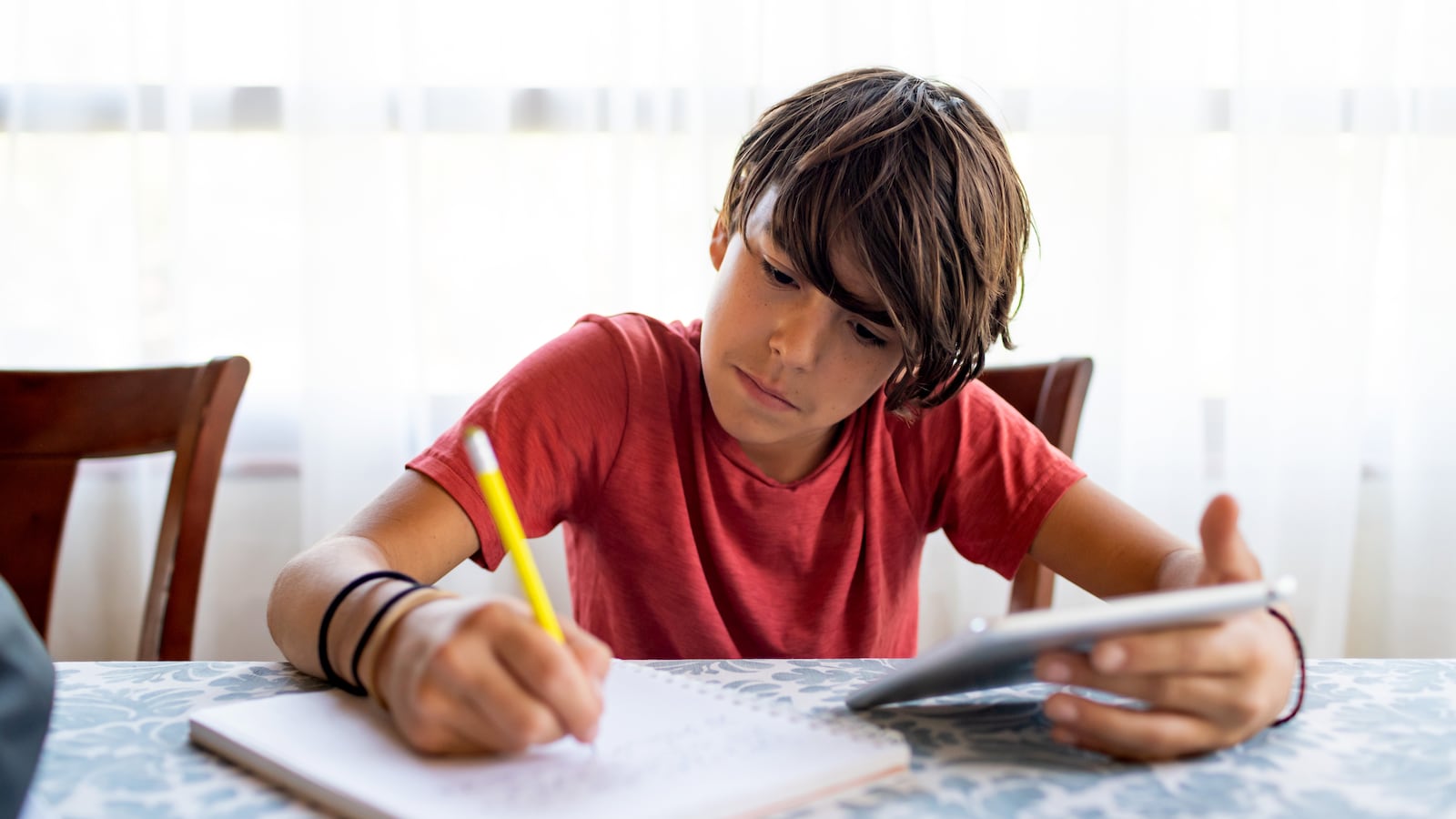Each year when June came around, a handful of my students faced a dilemma: Knock out those last assignments, or extend their high school career one more semester.
These young adults had no time to lose. With many already bringing up kids of their own, they scraped together what they could to buy groceries and pay rent. Many claimed gangs. All had abandoned or been abandoned by traditional schools in their South or East Los Angeles neighborhoods and now attended our one-room alternative high school.
As students in an independent studies environment, they built their school schedule around their complicated lives and worked at their own pace to complete assignments for one subject at a time. There were no traditional classes, just me as the sole teacher to guide them through it all. Now, so close to the finish line, it only seemed right to give them what I gave my own kid: a kitchen table where we shared a hot supper before buckling down for some homework each night.

We kept the rules simple: No one under the age of 18 for liability reasons. No cell phones and all focus. Leave by 10 p.m., because my husband and I were already both too old for all-nighters. Keep the language clean, because my child was still in elementary school.
It worked. Fueled by Trader Joe’s snacks and their own grit, each June these “kitchen table students” put the finishing flourishes on their last essays and made peace with math. Once they did, these students proudly walked across the graduation stage.
Two years later, as a middle school principal in a similarly under-resourced community, I faced an interesting dilemma. Despite students’ strong standardized test scores, many courses had fail rates of 50% or more. “They just don’t sit down at the kitchen table and do their homework,” a teacher asserted.
“Let’s talk about why that is,” I said. “Let’s figure out a way to rethink what the kitchen table might be.”
Together as a staff we began brainstorming, imagining the literal kitchen table space as it might look for each student. For some of our students, that meant no table at all, because they lived in a motel or a car. Some had a kitchen table, but there were so many people in the house that there was no room to set up shop there. Some didn’t have electricity. Some didn’t have quiet. Some didn’t have adults at home in the evenings to get them going. Some didn’t have anyone at all to ask for help when they got stuck. Some had to make dinner. Some had to watch after younger siblings and cousins. Some went to church every night of the week. Some worked. Some ran the streets. Some conducted business in the streets.
We knew we couldn’t ensure all of our students had real kitchen tables where learning could happen. So we moved from the literal to the metaphorical. A “kitchen table” is a space where you can breathe easily, and where you are comfortable and safe enough to focus with confidence. There must be time, lots of time, without interruptions from family drama, from the street, from work that brings in money now but isn’t going to get anyone to college all on its own.
We resolved that we would list out the students who wouldn’t/couldn’t/didn’t do their homework. Every adult at the school would take on a cohort of these students to nudge and nag, to cheer for and cheer up. We couldn’t all be everything to our students. Some of us were great at answering algebra questions. Some of us knew the days each local food bank was open. The essential task was simply to keep tabs on our kitchen table students and connect them to the adults at the school or the agencies in the community who had what they needed.
Four years ago, COVID pandemic restrictions elevated the kitchen table to schoolhouse status. As a society, we did what we had to do to keep people alive. But we know now what we suspected even then: Many young people were locked down at home without a kitchen table — literally, metaphorically, or both. They paid a huge price. They lost out on learning. Their mental health suffered. Their hopes and dreams seemed and still seem further from reach. How, now, will we make up for lost time when so many students never really had a kitchen table to begin with?
I’m not suggesting educators take their work with them each night, but I do believe healthy school communities can make the metaphor real. At its heart, the kitchen table is hope held out for young people who might struggle to find it on their own. It is having somebody who asks “How are you?” each day and pays attention to the answer. It is adults knowing whether each student has a home today and who might not have one tomorrow. It is having someone to ask for help — with math or with life, or both. Both old-fashioned and radical, the kitchen table metaphor means every student has at least one space in the day to call their own, to feel safe, and to be seen.
Shanley Rhodes, Ed.D., has been a Los Angeles educator for 25 years. She has launched two high schools and spent many years working with formerly incarcerated youth and adults. She and her husband, an elementary school administrator, are the proud parents of a college sophomore.


